As I spread the news that I’d bought a block of land in Normanhurst—a suburb I wouldn’t have thought was especially well-known around Sydney—I was surprised by the number of people I met who said things like: ‘Normanhurst! I grew up around there.’ Or ‘Normanhurst! We bought our first house there, raised our kids.’ Or my personal favourite: ‘My wife went to Loreto Normanhurst! She and her girlfriends used to sneak off to smoke in the bush down the back—the nuns’ graveyard is down there, you know.’
A nuns’ graveyard? Behind my block??
The back fence. What’s beyond? A graveyard?
Where is Normanhurst?
Although I’ve lived on the Upper North Shore of Sydney in the past, I was ignorant about Normanhurst. Time to find out more.
Normanhurst is 22 kms from the centre of Sydney. It has a train station, only 15 minutes walk from the block via a pedestrian overpass crossing busy Pennant Hills Road. The overpass exists, I assume, for the day girls of Loreto, and also nearby Normanhurst Boys High, who arrive each school day by train and schlep up the hill to their schools. The school kids may also be part of the reason Normanhurst supports a small but vibrant little group of shops, cafés and take-away places next to the station.
Walk to rail!
The first noticeable thing about Normanhurst’s geography is that it’s split in two by Pennant Hills Road, a major north-south highway. The second thing to notice is that on both sides of this divide the place is thick with bush. On the east (‘my side’), the bush runs down into Fox Valley and meets land occupied by the SAN Hospital. On the west, Normanhurst backs onto Berowra Valley—the Great North Walk runs through there. I read that Normanhurst also has several small waterfalls: this is intriguing news, and I look forward to exploring the bush walks. Not too bad at all, only 22 kms from the CBD.
22 kms from the Sydney CBD. Green patches = bush.
Who was Norman?
Hornsby was named after the convict-turned-constable Samuel Henry Horne, and nearby Thornleigh was named after his sidekick Constable John Thorn. When the railway reached the area and a new name was needed for the junction in 1905, the place became Normanhurst. So who was Norman?
Norman Selfe (1839 – 1911) was a civil engineer and local worthy. You can read all about him in the Dictionary of Sydney. (The word ‘hurst’ means ‘wooded hill’ derived from the Old English ‘hyrst’.) Naming a place after a prominent citizen is common, but it’s curious that his Christian name was so honoured rather than his surname. Why not … Selfehurst? Selfeleigh? Selfeby?
Even more intriguing, apparently Norman Selfe himself would have preferred the suburb be named ‘St Norman’s’. This would have been (he wrote in 1910) ‘more elegant and suggestive’, though suggestive of what is not recorded.
Norman Selfe (not St Norman) [photo source]
What did Norman do?
Norman Selfe died in 1911 and his fascinating obituary was published in the Sydney Morning Herald. It’s worth reading for the elegant language alone:
BRIDGE BUILDER. DEATH OF NORMAN SELFE. A DISTINGUISHED CAREER.
‘A pioneer bridge builder, a public spirited citizen and an engineer who played no unimportant part in the building up and remodelling of Sydney died yesterday in the person of Mr. Norman Selfe. The deceased gentleman was one of the best known civil engineers in Australia. Born on December 3, 1839 at Kingston on Thames he had just passed the allotted three score years and ten. Yet up to the last he retained the fullest use of all his faculties.’
The obituary goes on to describe many significant civil engineering projects around Sydney for which Norman Selfe was responsible, including steam ships, and ‘the first ferry boat with screw at both ends now so common in Port Jackson.’ He built mills and factories, water works, pumping plants. He was the first to introduce lifts or elevators into NSW and he patented a new system of wool pressing. He installed hydraulic and electric lights in the city, and gas lights on the trains. Nearly all the deep sea wharves at the north end of the city in the late 19th century were reconstructed by Selfe, and he built the first solid quay wall of concrete. He was also a teacher—the first Sydney technical school was initiated by Selfe at the School of Arts in 1865. Sydney’s circular city rail line was his idea. It sounds as if Norman was single-handedly responsible for building a great swathe of Sydney.
But wait, there’s more …
Design for the Sydney Harbour Bridge
Amongst the many public works with which Norman Selfe was involved, I noticed several references to ‘the North Shore bridge’. Was this our bridge, famous the world over, our own ‘coathanger’? Yes! That is, it could have been.
In 1900, the government organised a worldwide competition for the design and construction of a harbour bridge. Norman Selfe submitted a design for a suspension bridge and won the second prize of £500. Some kind of controversy ensued (as seems so often the case with major public works) and a second competition was held in 1902. This Selfe won outright, with a design for a steel cantilever bridge. The selection board were unanimous, commenting: ‘The structural lines are correct and in true proportion, and ... the outline is graceful’. However due to an economic downturn and a change of government in 1904, construction of this design never began. (The bridge we know and love was built in the 1930s to a British design.) You have to feel for Norman, who was apparently still talking about ‘his’ bridge when he died in 1911.
Winning bridge design by Norman Selfe - State Library of New South Wales
Gilligaloola
Selfe built a number of big fancy houses around the city, including in Balmain and Ashfield. The one he built in Normanhurst, where he was living at the time of his death, still exists at 82-84 Pennant Hills Road—five minutes walk from my new block. This heritage-listed house, now rather run-down, is called Gilligaloola. Although the architect of the house is unknown, it seems clear that Selfe had an extensive hand in its design. I discover a fellow-feeling with Norman—is that not exactly what I’m about to do? Hire an architect to build a house in Normanhurst and spend a lot of time interfering with the design?
Gilligaloola was constructed in 1893 on 14 acres of land, so it’s a little larger than my 1350 square metres. It was also planted with Italian gardens and orchards. A couple of fine old trees remain, including an extremely tall Norfolk pine which is a bit of a local landmark.
Gilligaloola, 1893, ‘Arts and crafts’ style
From the Heritage Office files: ‘Constructed in 1893, Gilligaloola is an imposing two storey house with fine Art Nouveau detailing and has outstanding architectural character …
The two storey brick house has picturesque verandahs to the north, east and west elevations and a large tower. The upper story is timber framed and decoratively [sic] shingles and lath and plaster lined. The front section of the roof is ripple iron.
The house is finely detailed throughout with five panelled doors and baronial style marble fireplaces. Remarkable Arts and Crafts chimneys and quality decorative woodwork complement the house.’
Gilligaloola last sold in 1997. I wonder if the ‘baronial style marble fireplaces’ have survived? Should I consider one of those for my place? Or perhaps a ‘large tower’? #designideas
Despite this engaging description of the house, it now looks unprepossessing from Pennant Hills Road, though those ‘remarkable chimneys’ can still be glimpsed.
Norman’s ‘Gilligaloola’ today, five minutes walk from (what will be) my place.
As the Heritage Office file drily comments: ‘A modern brick fence is not sympathetic.’
No doubt there will be Council regulations about the sort of front fence I can build at my block. But that’s a long way off. For now, I’ve started a loyalty card at a Normanhurst café. When I handed in the keys to my old house, the young real estate agent said: ‘Normanhurst! I know it well. I went to school around there. There’s a great café—The Wooden Mill. Do you know it?’
I do.
Getting started in Normanhurst.

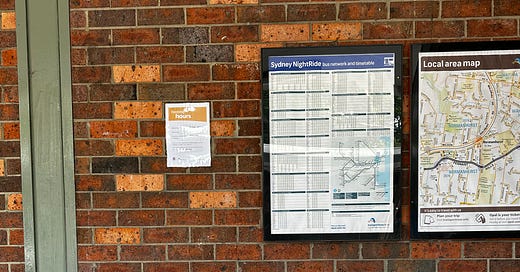


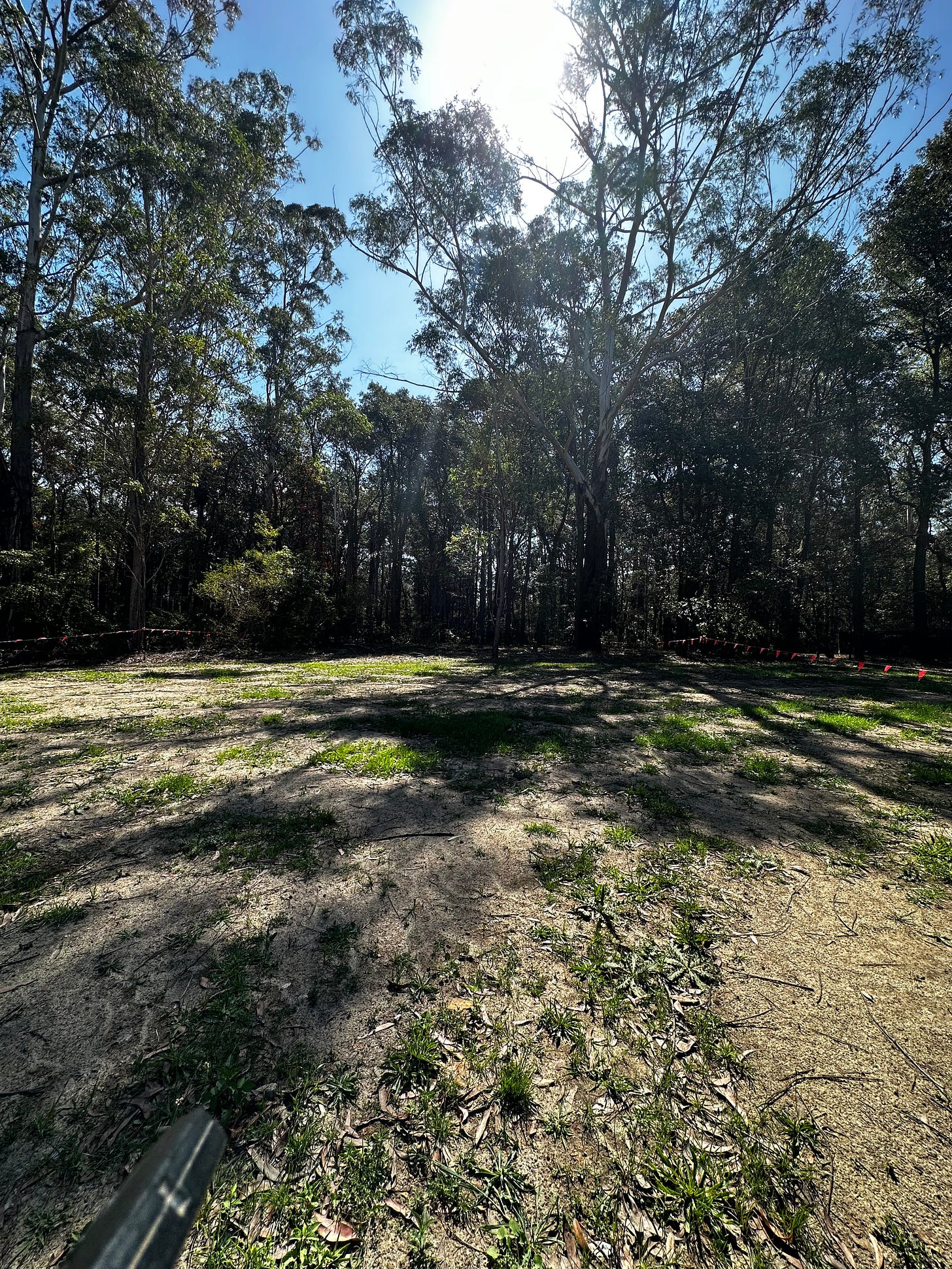


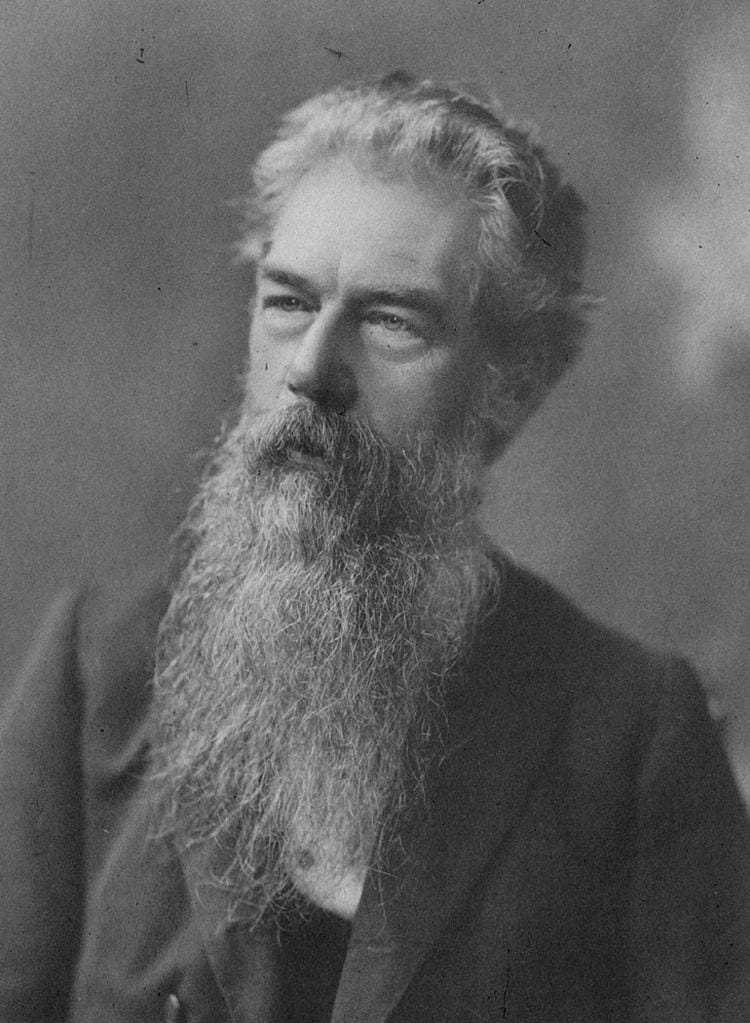
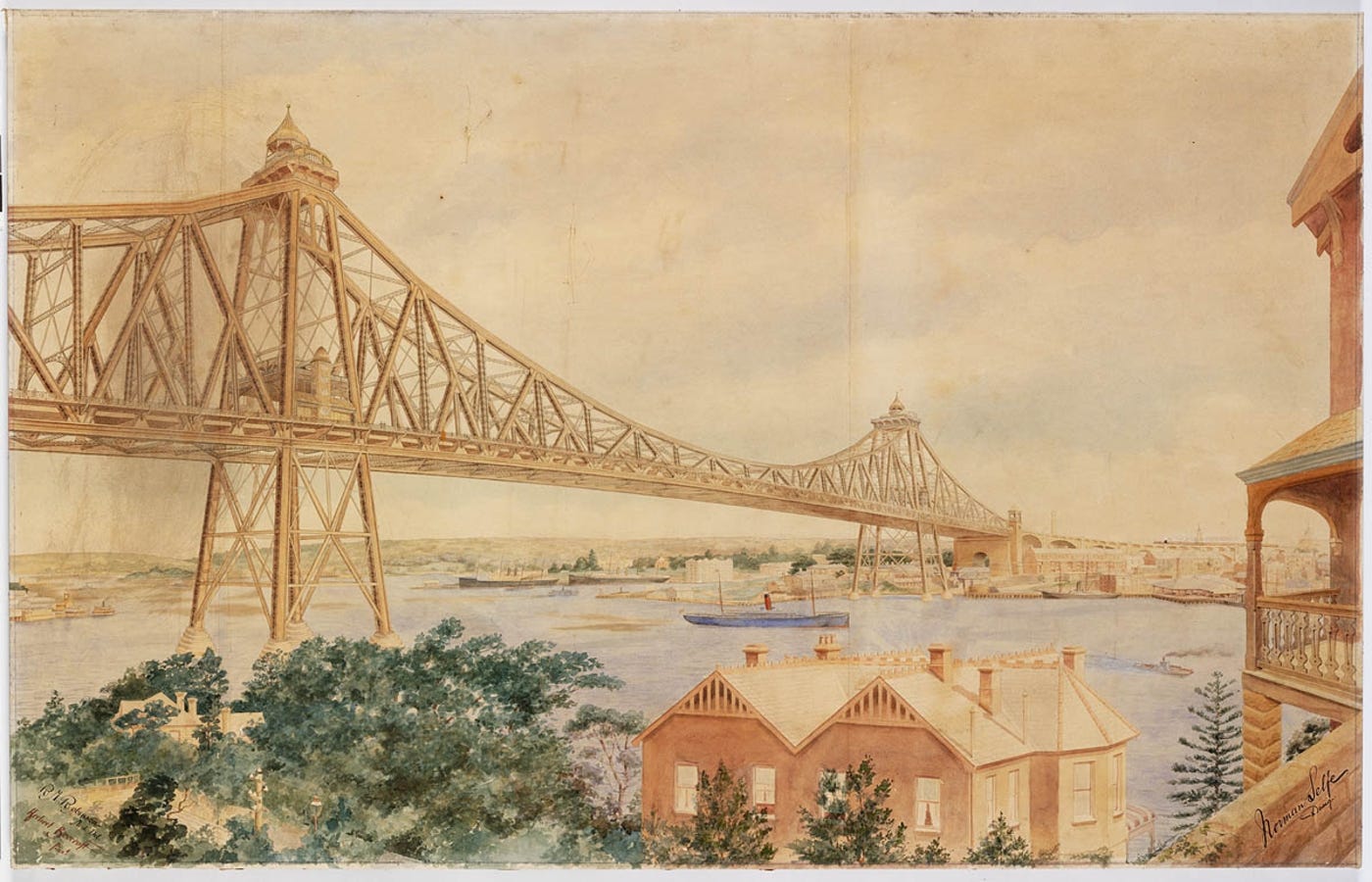
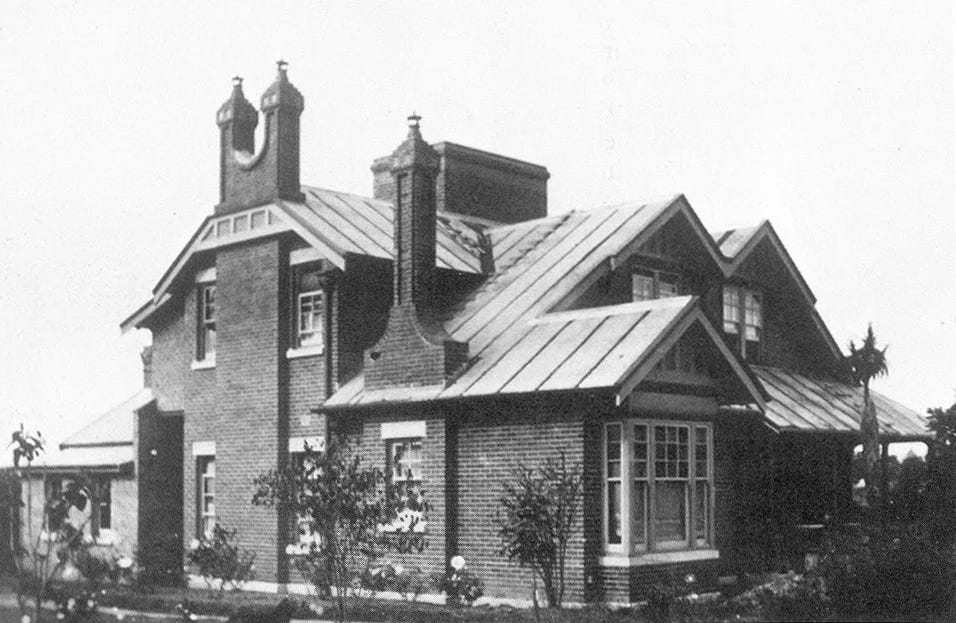
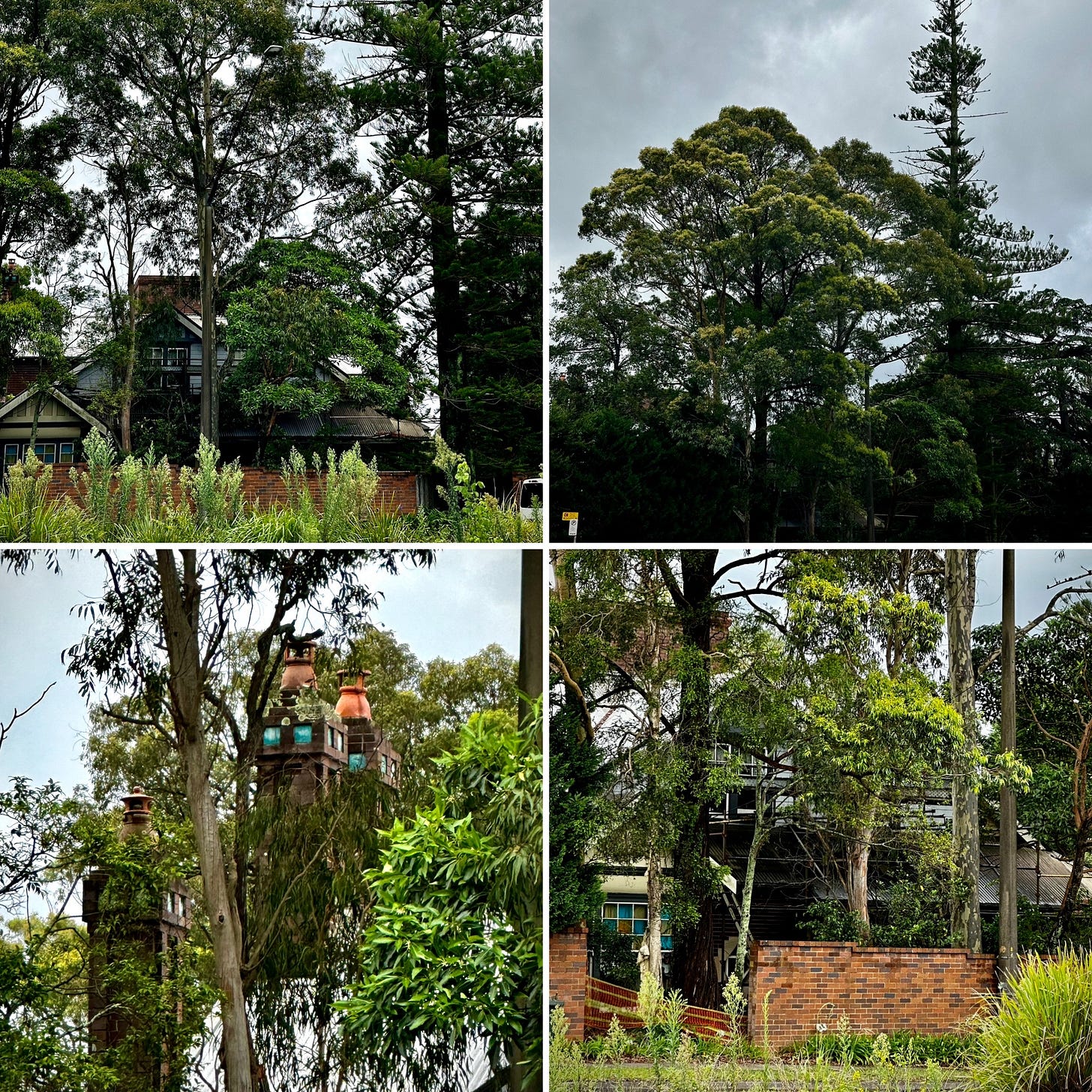
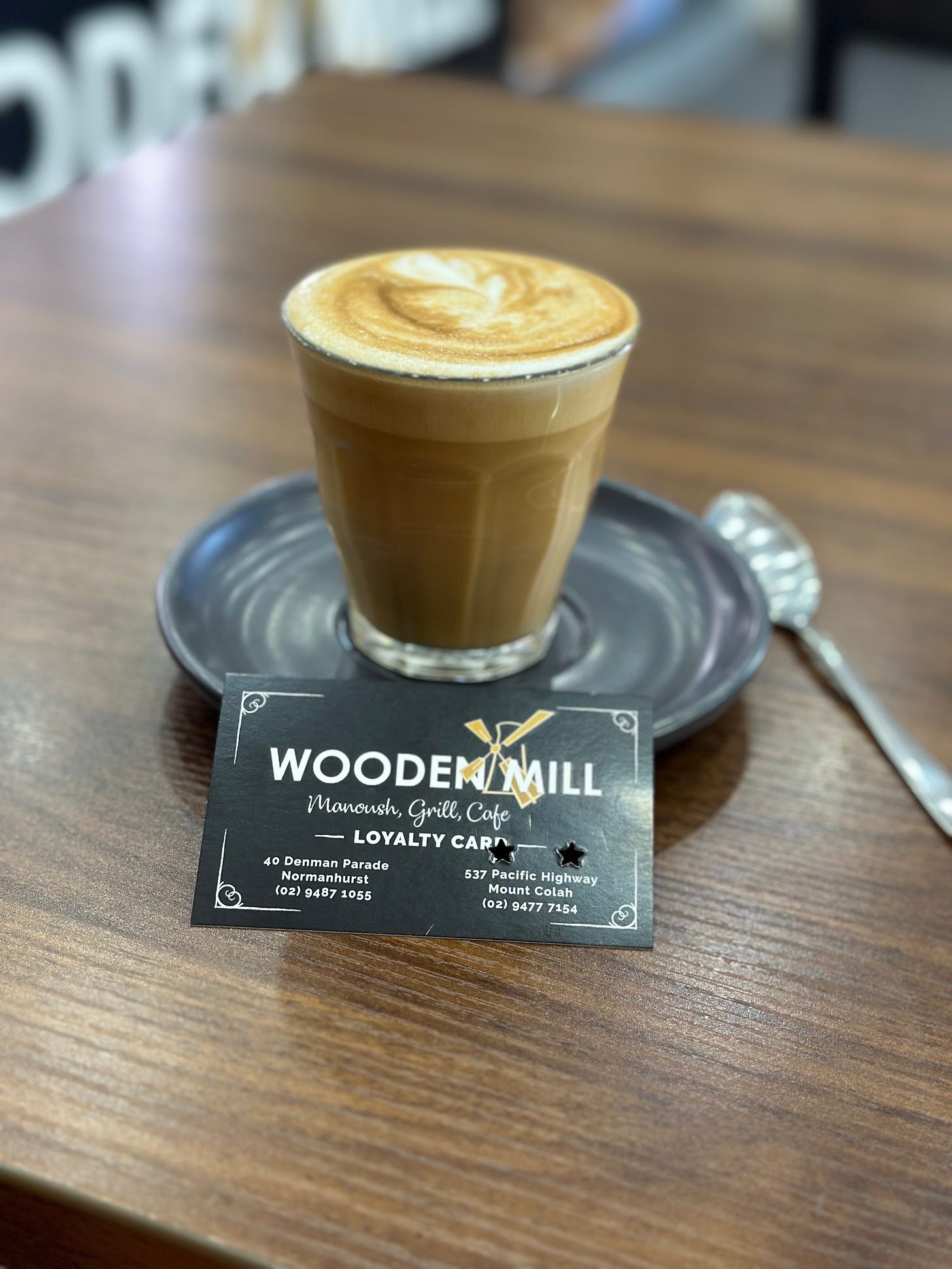
Fascinating Annette. What energy you have to be building a house at nearly 68. I remember because I just turned it myself and the only things I am building are compost heaps. I admire your fortitude. Valerie